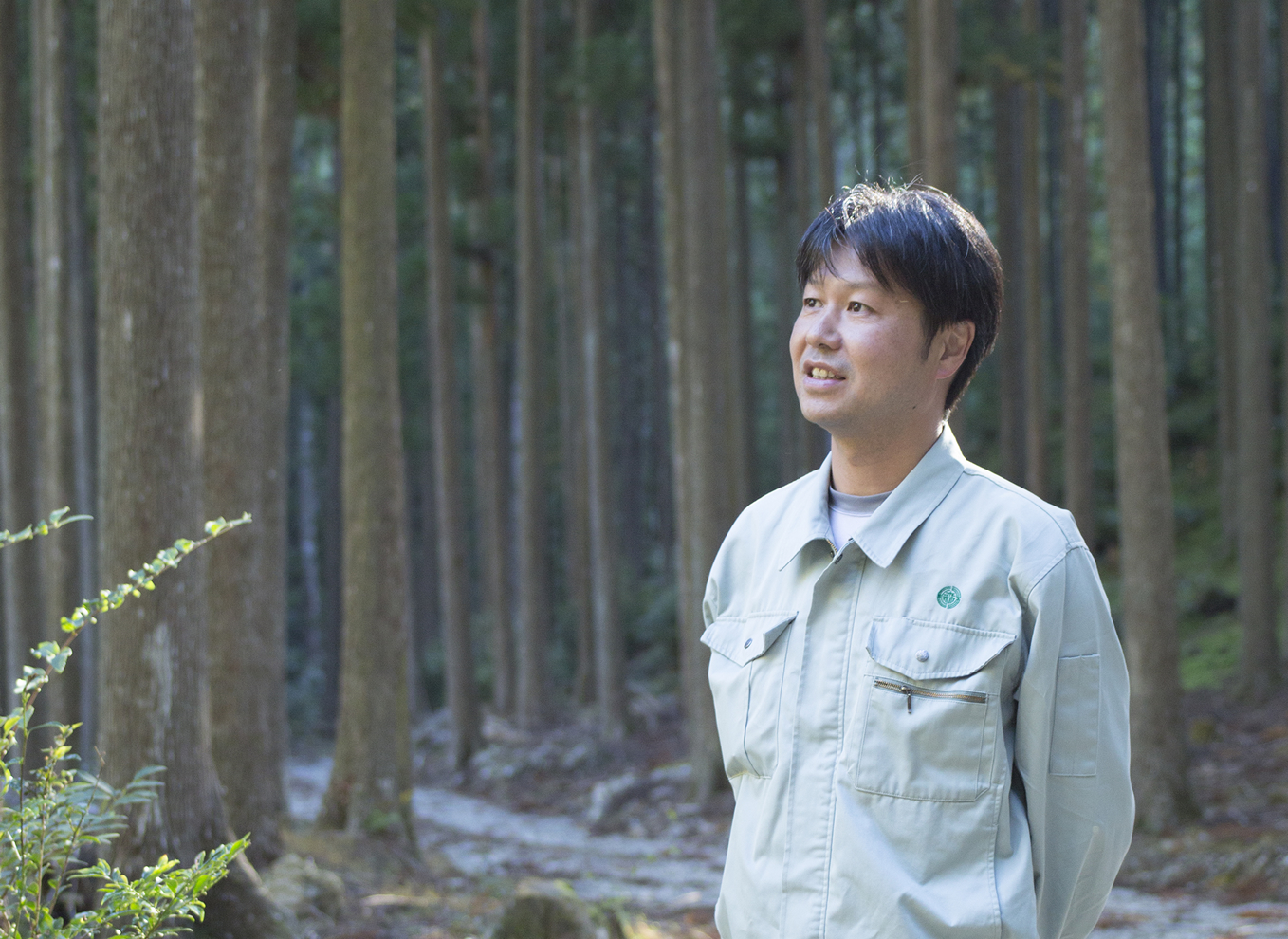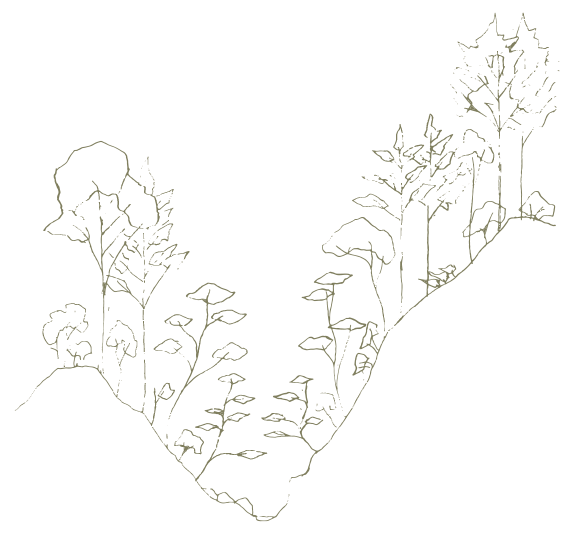
http://www.miyagawa-shinrin.jp
人工林と自然林の違いをご存知でしょうか。人工林とは、主に建材にする目的で、同一規格で一様なスギ・ヒノキなどの針葉樹を大量に生産する林のこと。大台町の山の多くも人工林ですが、需要減と価格の下落などで、伐採するたびに赤字を生む山林が増えています。逆に自然林とは、多様な樹木が複雑に配置されている森のこと。環境に応じて樹木の棲み分けが自ずとなされ、植生と生物の多様性が存在し、自然の連鎖を垣間見ることができます。さらに、根系の多様性などから表層崩壊を抑止する機能が注目されつつあります。
この状況を踏まえ、宮川森林組合では2007年から「自然配植」という技術を使った広葉樹林業の確立を目指して活動しています。「自然配植」とは簡潔に言うと、 自然林ができあがるために必要な「森林立地(場)評価」「適地適木理論」「樹木の生育理論」の3つで構成される森林再生理論です。立地・社会情勢からその場所で将来、林冠を形成する主木を決定。さらに成長の早い先駆種を適切に配置することで、主木に最適な環境を整え、遷移の短縮を図ります。また、立地環境に適した亜高木・低木類を適切に配置し、階層構造の発達した多様性の高い森へと誘導します。
難しいのが“適地適木”の見極め。森には多様な立地環境があり、500種類以上の自生種から適木を選び、組み合わせて植えなければなりません。また、多様な樹木の苗木は市場に出回っていません。組合では現在、大杉谷を含む森林から採取した約100種類の種から苗木を育てています。
そしてもう一つ、弊害となるのがニホンジカの食害で、その被害は大きく3つ。植林した苗木に対する食害、天然更新された稚樹に対する食害、天然林・自然林の成木の剥皮被害で、経済的・環境的に大きな影響を与えています。組合では樹木を守るために、約100㎡に囲ったネットをランダムに張り巡らす「パッチディフェンス」を採用。約9年間、良好な成果を得られています。
立地環境に応じて棲み分けられる樹木の種類と呼応するかのように、森林資源の市場ニーズは多様です。これからは、人工林と棲み分けができるマーケットを、それぞれの地域の人たちが考え、ビジネスとして成立させていく必要があります。広葉樹林業で儲かるモデルを生み出せれば、地域産業の新たな選択肢が生まれる。その実現に向けて、大きな可能性を感じています。

広葉樹植樹による50年後の森の実施想定例
Example of expected future of broad-leaf forest in 50 years
Do you know the difference between artificial forest and natural forest? Artificial forest is forest planted to produce a large amount of standardized coniferous trees such as sugi and hinoki mainly for producing construction material. A major part of the mountains in Odai Town is artificial forest, but deficits increase each time the woods are cut because of reduced demand and the cost of increasing forest coverage. On the other hand, in natural forest, various kinds of trees are mixed and grow together. Different types of trees naturally grow according to the environment, and there is diversity of vegetation and living things. You can observe links of nature in such a forest. Natural forests have also gained attention for preventing shallow landslides by diversified root systems.
Because of this, Miyagawa Forestry Association has started broad-leaved tree forestry using the technique of natural planting design. It is, in short, a forest restoration theory that consists of 3 elements: evaluation of the location of forest, theory of the right tree in the right place, and plant growing theory. The main trees to form tree canopies in the future are decided based on the location and social conditions. By arranging trees which grow fast ahead of them, the optimal environment for the main tree is provided to reduce the time for transition. In addition, subcanopy trees and bushes suitable for the location are arranged appropriately to create forest with high diversity and a hierarchical structure.
The difficult part is how to decide “the right tree in the right place”. There are various environments in forests, and we have to select suitable trees from more than 500 species of naturally-grown trees. And seedlings of such a variety of trees are not sold in the market. Currently the association grows nursery trees from seeds of about 100 kinds of trees collected in Osugidani.
Another problem is damage by Japanese deer. The three major damages are damage by eating planted seedlings, eating naturally grown nursery trees, and peeling decortication of grown trees in the natural forest. Their economic and environmental impact is large. The association adopted “patch defense”, which randomly surrounds about 100m2 of land with nets to protect trees. It has brought on good results for about 9 years.
As if it reflects the types of trees which grow according to the environment of their location, the market needs are diversified. From now on, people have to consider a market which satisfies needs different than artificial forest can satisfy, and establish that as a business. If a lucrative model with broad-leaved trees can be created, it will become a new option for local industries. We see a great potential in the realization of this new model.
